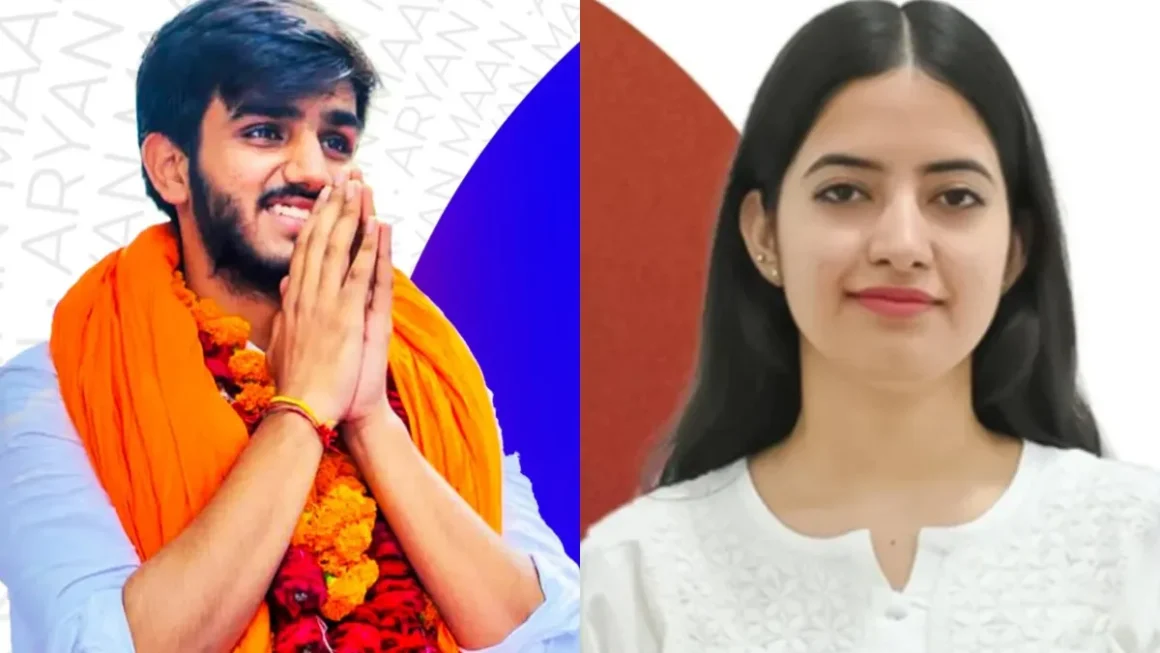
Punchline: With ABVP’s Aryan Maan leading the presidential race and NSUI holding ground in the vice-presidential contest, the DUSU 2025 elections are shaping up as a defining moment for Delhi University’s student politics, reflecting both campus concerns and national political undercurrents.
The high-stakes Delhi University Students’ Union (DUSU) elections of 2025 have entered the final phase of counting, with early trends placing Akhil Bharatiya Vidyarthi Parishad (ABVP) candidate Aryan Maan in the lead for the coveted post of President. The counting process, which began on the morning of September 19, has been marked by tight security, long hours of scrutiny, and intense anticipation across DU’s North and South campuses. As thousands of students, alumni, and political observers tune in, the DUSU elections once again reaffirm their reputation as one of the most closely watched student political battles in the country.
Counting in Multiple Rounds
According to the Chief Election Officer, the counting process could stretch up to 18–20 rounds, depending on the number of Electronic Voting Machines (EVMs) being tallied and the complexity of verifying each booth. Each round represents a significant step toward the final verdict, and candidates from both major camps — ABVP and the National Students’ Union of India (NSUI) — have stationed their representatives at the counting centers to monitor the process. Officials have emphasized that transparency is being maintained, with security forces ensuring a smooth process inside the North Campus venues. Only after all rounds are complete will the final results for the four key posts — President, Vice President, Secretary, and Joint Secretary — be declared.
ABVP’s Strong Performance
ABVP, which has historically dominated student politics at Delhi University, appears poised for another strong showing. Early trends suggest Aryan Maan’s lead is consolidating with each round, sparking celebrations among ABVP supporters gathered outside colleges and at the North Campus counting centers. Slogans, drum beats, and flag-waving demonstrations marked the atmosphere as students supporting ABVP predicted a sweeping victory. If the trends hold, ABVP could secure the presidency for yet another term, adding to its already formidable presence in student politics nationwide. Analysts believe this could strengthen ABVP’s narrative that it represents the aspirations of India’s youth, connecting campus issues to larger national discourses on employment, education, and governance.
NSUI’s Counterweight
Meanwhile, the National Students’ Union of India (NSUI) is putting up a stiff fight, particularly for the Vice President’s post, where its candidate is reportedly ahead in some rounds of counting. NSUI leaders have expressed confidence that their agenda — focused on campus transparency, opposition to fee hikes, women’s empowerment, and academic reforms — has resonated with students. They have also alleged irregularities in polling in some colleges, reiterating their demand for greater scrutiny of the EVMs. The NSUI’s performance in these elections will be crucial for the Congress-backed student body, which has been working to rebuild its base in DU after years of ABVP dominance.
Voter Turnout and Election Scale
This year’s polls saw a 39.45% turnout, a modest but significant rise from the previous cycle’s 35%. The elections were conducted across 52 centers and 195 booths, with students casting their votes on 711 EVMs. The relatively higher turnout suggests that issues of campus safety, placements, fee structures, and women’s representation have struck a chord with the student community. Student activists have noted that social media campaigns also played a bigger role this year, with WhatsApp groups, Instagram reels, and Twitter trends amplifying the messages of contesting organizations. Offline, traditional poster wars, cycle rallies, and door-to-door canvassing in hostels remained central to the campaigns.
Significance of the Results
The DUSU elections are closely watched not only within the university but also in the broader political landscape, as they are seen as a testing ground for national parties’ student wings. An ABVP sweep would be viewed as a morale booster for the Rashtriya Swayamsevak Sangh (RSS) and the Bharatiya Janata Party (BJP), while gains for NSUI would energize the Congress’s youth base. Political experts argue that the elections serve as a laboratory for strategies that could later be replicated in state or national polls. The spotlight on DU also makes the results a symbolic barometer of the mood of urban youth in India’s capital.
Atmosphere on Campus
The atmosphere on the North Campus has been charged throughout the counting day. Supporters of both ABVP and NSUI thronged the gates of counting centers, chanting slogans and waving flags. Police and paramilitary forces were deployed in large numbers to prevent clashes, a common occurrence in the past during DUSU election results. Food stalls, tea vendors, and news crews surrounded the area, creating a carnival-like yet tense atmosphere. Many first-time voters expressed pride in participating in what they described as “mini-general elections.”
Awaiting the Final Results
As the counting heads into its later rounds, the excitement across the DU campus remains palpable. Students, faculty, and political observers alike are waiting for the final declaration of results, which could shape the trajectory of campus politics for the next year. Beyond campus, the results are also expected to spark debates in national media and among political parties, highlighting the enduring significance of DUSU in shaping narratives about India’s youth.
FOR MORE BLOGS – beyondthepunchlines.com

 Add to favorites
Add to favorites








